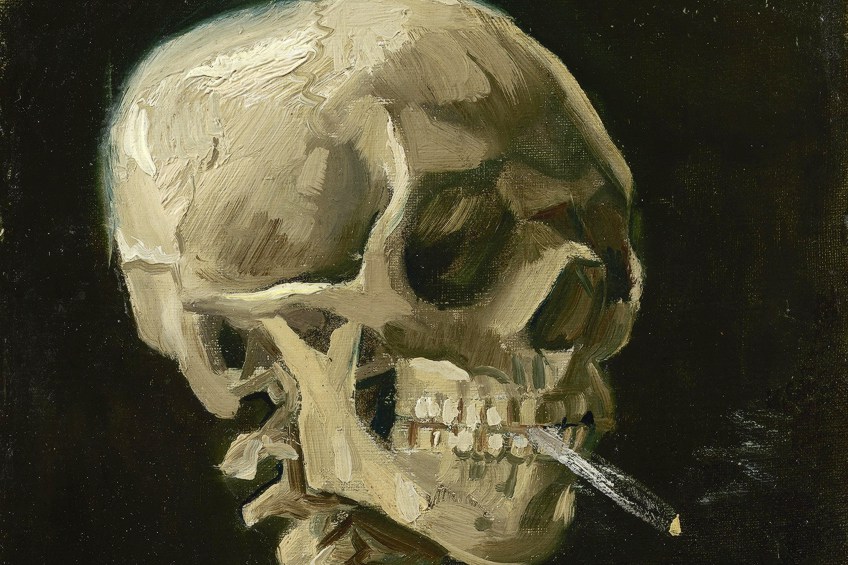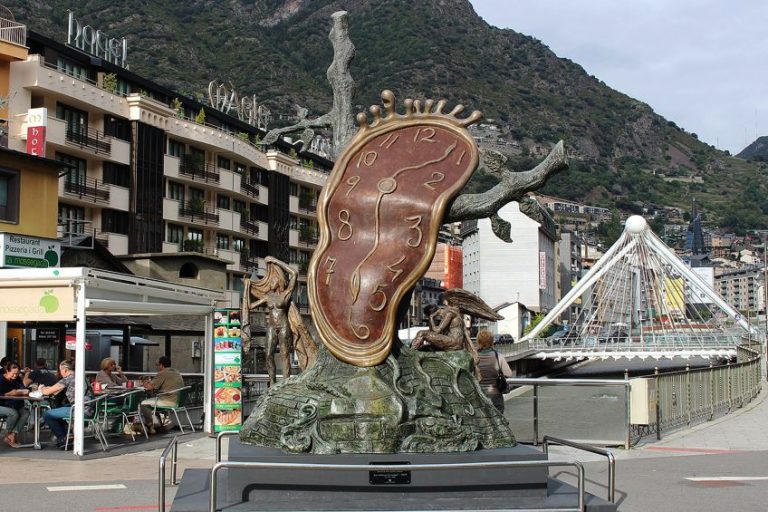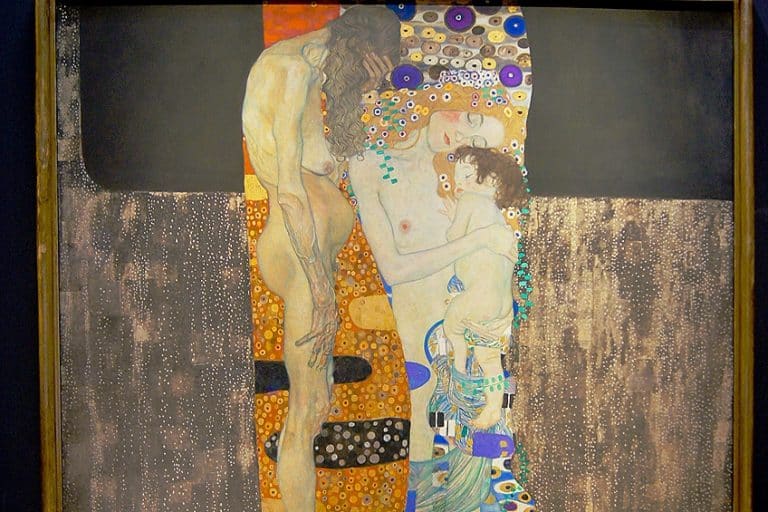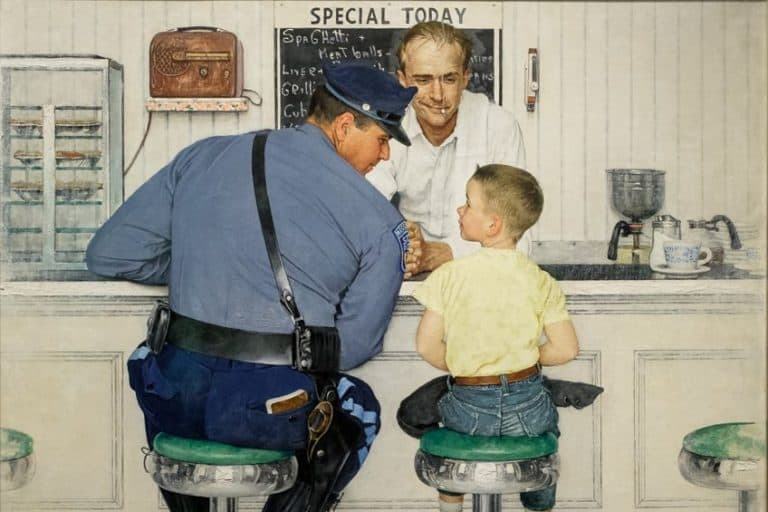Van Gogh Skeleton Smoking – An Enlightening Look at the Van Gogh Skull
When we think of Vincent van Gogh, we are probably reminded of his famous paintings The Starry Night (1889), The Potato Eaters (1885), or even his Bedroom in Arles (1888). We have come to remember van Gogh for his majestic swirls of colors and unique compositions, but maybe his paintings of skeletons or skulls have slipped past us. This article will look at one example of a van Gogh skeleton painting, titled Skull of a Skeleton with Burning Cigarette (c. 1886).
Artist Abstract: Who Was Vincent van Gogh?
Vincent Willem van Gogh was born in Groot-Zundert in the Netherlands on March 30, 1853, he died in July 1890 after committing suicide by shooting himself in the chest, dying several hours after the incident. Van Gogh struggled as an artist, his brother Theo van Gogh also supported him financially, and as an art dealer, helped sell his paintings.
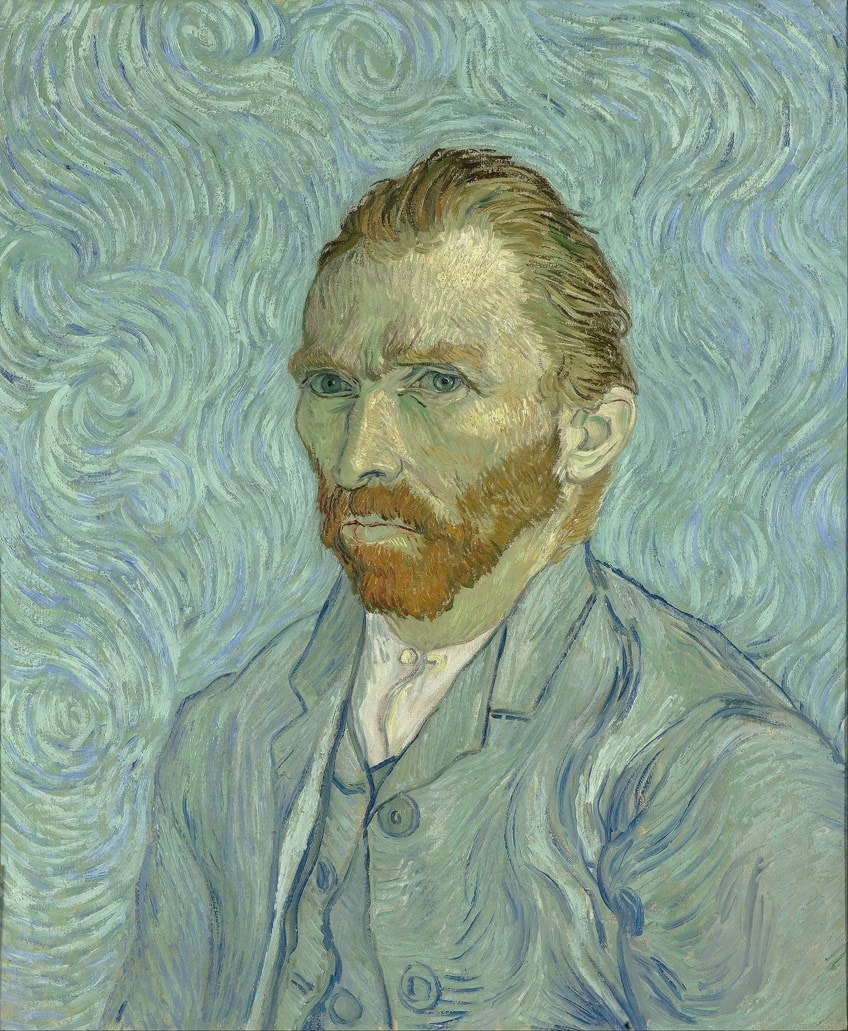
Van Gogh’s parents were Theodorus van Gogh, who was a minister, and Anna Cornelia Carbentus; he also had several siblings. Van Gogh started art from an early age and always painted in an expressive manner. He moved to various cities during his life and committed himself to a mental institution in France.
His artwork influenced numerous others from art movements like Fauvism, German Expressionism, Abstract Expressionism, among others.
Skull of a Skeleton with Burning Cigarette (c.1886) by Vincent van Gogh in Context
In Dutch, it is called Kop Van Een Skelet Met Brandende Sigaret, otherwise known as Skull of a Skeleton with Burning Cigarette. It is believed this was painted during the winter months when van Gogh studied drawing and painting at Antwerp’s Royal Academy of Fine Arts, Belgium.
We will explore this unique van Gogh skeleton painting in more detail below, starting with a brief contextual analysis followed by a formal analysis where we discuss the painting itself in terms of van Gogh’s stylistic approach.
It is worth noting that there is no significant detail about this painting and sources have also noted that van Gogh did not provide details about it in the collection of letter correspondences to his brother, Theo van Gogh.
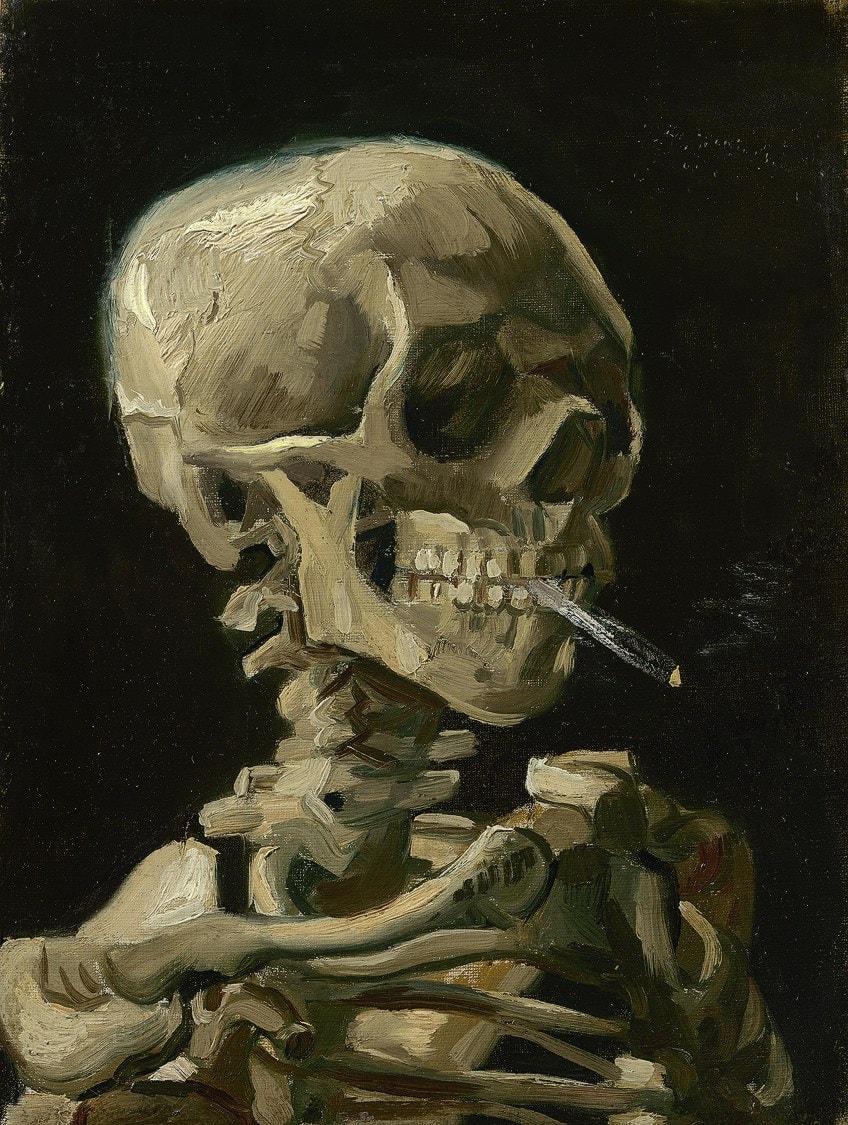
For a better understanding of the van Gogh skeleton painting, we will aim to explore when and where it was painted; we need to look at his life during the 1880s, where he lived, and the events that unfolded for him. These might provide us with clues around the whys regarding his motives for painting this specific subject matter.
| Artist | Vincent van Gogh |
| Date Painted | c. 1886 |
| Medium | Oil on canvas |
| Genre | Vanitas / Memento Mori |
| Period / Movement | Post-Impressionism |
| Dimensions | 32 x 24.5 centimeters |
| Series / Versions | Not applicable |
| Where Is It Housed? | Van Gogh Museum, Amsterdam |
| What It Is Worth | Price not available – it was part of the van Gogh family and procured by the Van Gogh Foundation during 1962. |
Contextual Analysis: A Brief Socio-Historical Overview
Some say that Vincent van Gogh’s Skull of a Skeleton with Burning Cigarette was painted as a joke or “satirical” image. Others say that it could have alluded to the idea of death, painted as a type of “memento mori”, which were paintings with symbols like skulls that acted as reminders of death. Van Gogh could have been inspired by Dutch artists from the 1600s who also painted Memento Mori artworks.
Whatever the reason was behind why van Gogh painted “Skull of a Skeleton with Burning Cigarette”, it is understandable to believe that it could possibly have been based on conscious and unconscious motives.
This was not the only van Gogh skeleton painting; he produced another titled Hanging Skeleton and Cat (1886). There are also two other van Gogh skull paintings, namely, Skull (c. 1887/1888) depicting a frontal view of a skull, and another similarly titled, Skull (c. 1887/1888) depicting a skull from a side angle; both skulls are set against a yellow background.
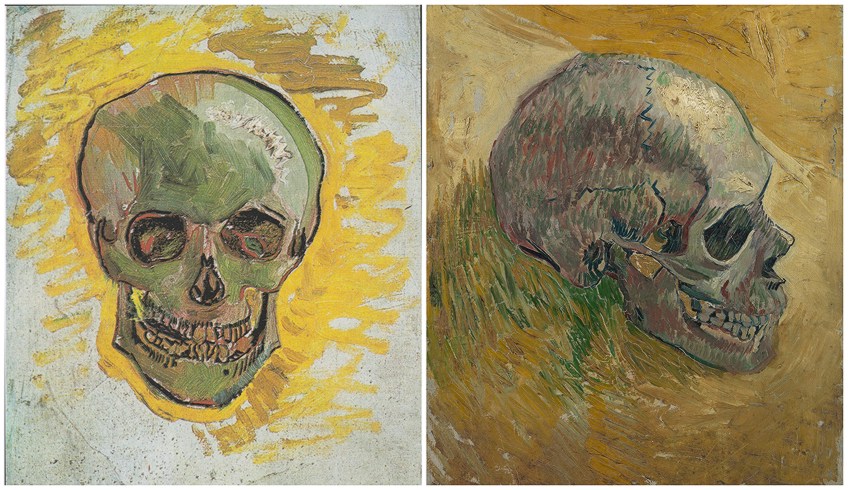
At the time it was painted, van Gogh studied at the Royal Academy of Fine Arts in Antwerp, where he pursued academic training in painting and drawing and apparently experienced several conflicts with several teachers due to his different and unorthodox artistic approaches.
He was also remembered as not enjoying the academic institutionalized training of art and is often quoted as mentioning that it was “damned boring”.
With the above in mind, Skull of a Skeleton with Burning Cigarette could have been a painting that was part of a study of anatomy, of which skeletons were drawn. However, van Gogh produced a painting too. Furthermore, this could also be van Gogh’s version of, as some sources suggest, “thumbing-of-the-nose” at the academic institutions or “establishment”. Assumedly, a conscious effort on van Gogh’s part.
Van Gogh did not remain at the Royal Academy of Fine Arts and left the school in 1886, moving to Paris to live with his brother Theo, which was around March 1886. However, to understand the possible unconscious motives that drove van Gogh to paint Skull of a Skeleton with Burning Cigarette, we need to go back a few years.
Facing Difficult Times
From 1883 to 1885 van Gogh lived with his parents in Nuenen, Netherlands. Here he produced several artworks, which included The Potato Eaters (1885). Van Gogh’s father, Theodorus van Gogh, also died of a stroke. Apparently, Vincent van Gogh did not have a harmonious relationship with his father, nevertheless, this undoubtedly impacted the artist and the rest of his family, including his mother, Anna Cornelia Carbentus.
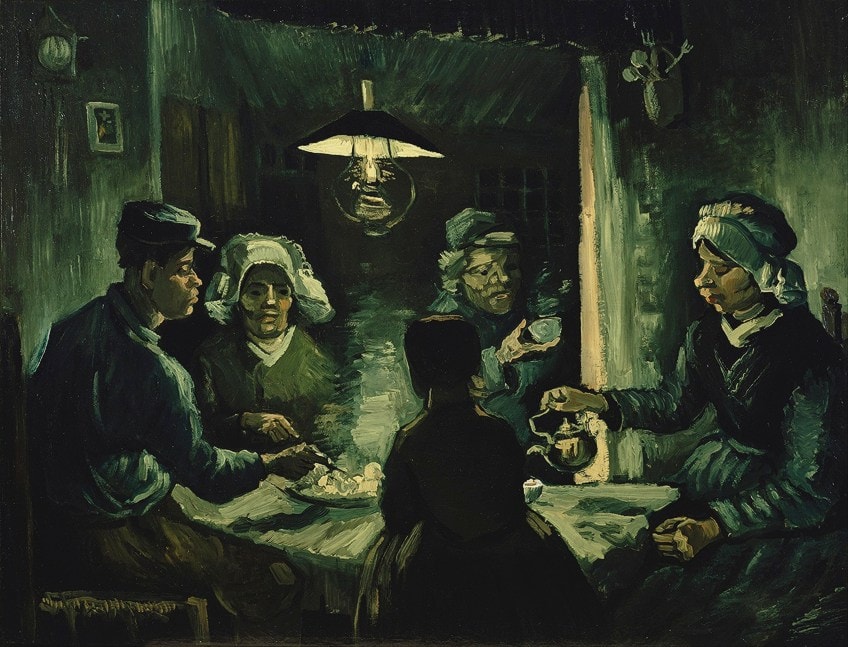
Death and difficult times were not unfamiliar to Vincent van Gogh; he was also faced with numerous occasions when loved ones tried to commit suicide. During his stay in Nuenen van Gogh was romantically involved with Margot Begemann who reportedly overdosed on poison, which was possibly spurred on by stress caused by the couple’s family not being in favor of the two marrying one another.
This was also a darker period in van Gogh’s art.
Apparently, his brother also wrote to him in one of their letters that he was not able to sell many artworks because it was not as “bright” as the paintings from Impressionism, which was a dominant art style at the time. Theo van Gogh was also an art dealer and helped sell his brother’s paintings.
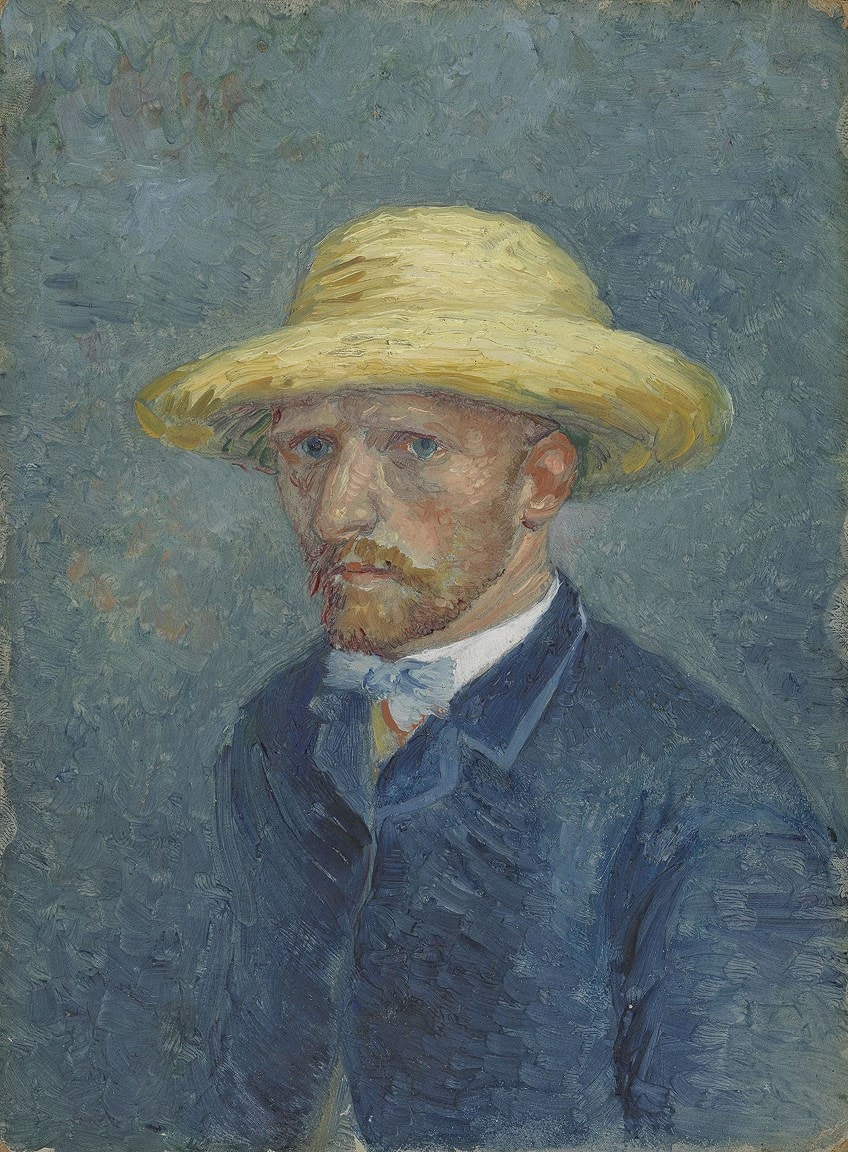
Van Gogh moved from his parents’ house in Nuenen to Antwerp, which is where he lived and studied for a time, as mentioned above. However, his life in Antwerp was fraught with ill health and poor diet. It is believed that he drank and smoked excessively and mostly only lived on bread and coffee. His teeth were also starting to fall out and he made efforts to consult a dentist.
In a letter to his brother Theo, dated February 4, 1886, Vincent wrote that he did not have money for his food and his work was costly. He continued to explain that his doctor advised him that he must “live better”.
Furthermore, he wrote, “I’ve made it worse by smoking a lot, which I did all the more because then one isn’t troubled by one’s empty stomach”.
Van Gogh certainly had mental and emotional pressures; he further explained to his brother that it was not “just the food”, but “also all the worry and sorrow that one has”. He mentioned his time in Nuenen, explaining, “You know that for one reason or another the time in Nuenen was far from carefree for me. What’s more – here – I’m very pleased to have come here – but it’s been a difficult time all the same”.
When we look at the social and emotional circumstances prevalent in van Gogh’s life when he painted Skull of a Skeleton with Burning Cigarette, it is easy to connect the dots, so to say, as to why he painted it. There are possibly several converging reasons that underlie the painting’s meaning, and we can pose the following question:
Did van Gogh unconsciously paint an image like this because of all his suffering and familiarity with death, based on the facts about losing his father, almost losing his love interest, and himself being on the edges of death due to ill health?
Van Gogh and Smoking
To further understand why van Gogh painted a smoking skeleton, we need to look at the significance of smoking to van Gogh. Some sources suggest that smoking was a large part of social life when van Gogh painted this, especially among artists’ groups. Apparently, van Gogh also preferred smoking tobacco pipes and this too was regarded as a “status symbol”.
He is often quoted as saying, “The best pictures are always those one dreams of when one is smoking a pipe in bed, but which never get done. But still one ought to try, however incompetent one may feel before the unspeakable perfection and radiant splendour of nature”.
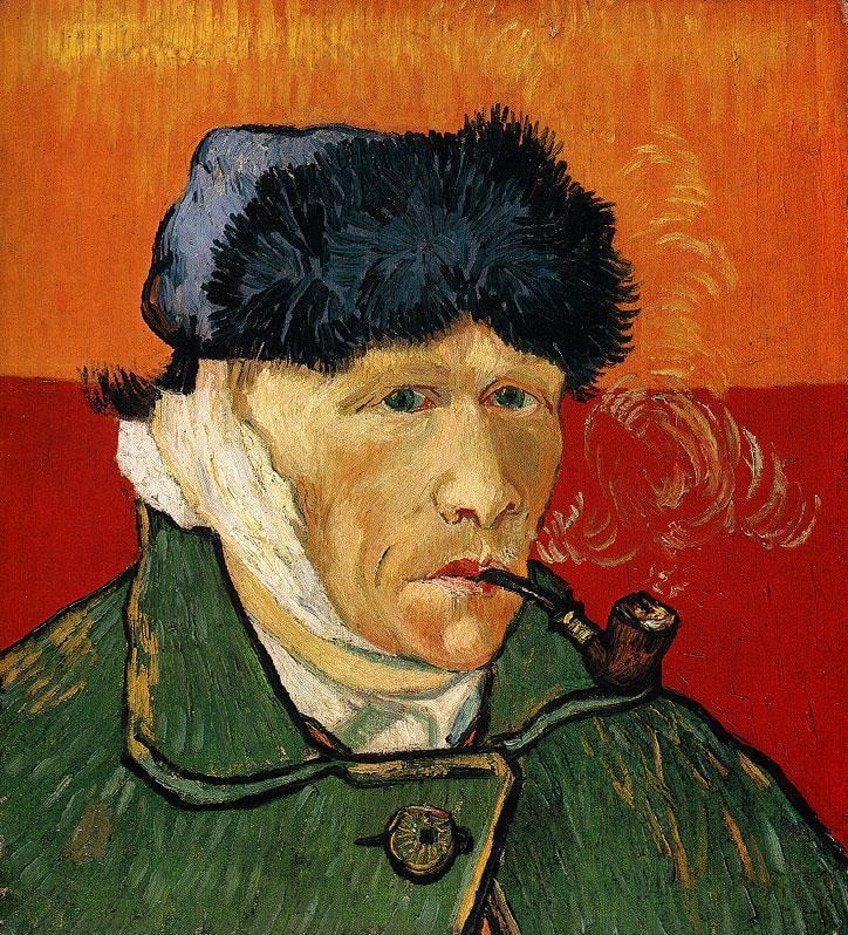
However, when we look at a letter to Theo from December 10, 1875, when van Gogh was a younger gentleman, he asked his brother if he already mentioned that he took up pipe-smoking and that “I’ve rediscovered in my pipe an old, trusty friend, and I imagine we’ll never part again”.
It appears that van Gogh continued smoking his pipe throughout his life, and this was undoubtedly a key part of his artistic processes as well as a way for the artist to find relaxation.
This was visually included in several of his paintings, including the Skull of a Skeleton with Burning Cigarette. Other, later, paintings include Van Gogh’s Chair with Pipe (1888) and Self-Portrait with Bandaged Ear and Pipe (1889).
Just Playing Around
It is also believed that van Gogh had a humorous side, albeit quite dark. If we look at Skull of a Skeleton with Burning Cigarette, we will find a lighter side to a darker subject matter. It is not often that we see a skeleton smoking, as if it is alive, evoking even a chuckle or grin.
We could also ask several questions: Did van Gogh paint Skull of a Skeleton with Burning Cigarette merely to have a bit of fun with an already serious subject? Was he possibly feeling a sense of boredom from his art classes at the Academy, and could this have been the only reason he included the cigarette? Was the artist just playing around?
Formal Analysis: A Brief Compositional Overview
Now that we have a contextual background about the possible meaning of Skull of a Skeleton with Burning Cigarette let us zoom in on it a bit more and discuss van Gogh’s formal elements like colors, brushwork, and more. We will first expand more on the subject matter.

Subject Matter
In the famous painting of a smoking skull, van Gogh utilized a blackish background and portrayed the upper torso and head of a skeleton; we only see the shoulders and uppermost chest area. It almost appears as if the skeleton is sitting and posing for the artist, what makes it come alive is the burning cigarette in its mouth.
The head of the skeleton is slightly tilted to its left (our right) and although it does not have any noticeable features that suggest life or flesh, it still has a sense of life to it. With this ever-so-slight tilt of its head, it almost appears to be gazing at us, the viewers.
Gazing at us in a nonchalant type of manner, however, this is open to interpretation, which is what makes this van Gogh skeleton painting so versatile in its meaning.

Looking at the cigarette, we notice that it is placed in the center between the skeleton’s protruding teeth; it is in the process of burning. The cigarette itself looks like it was rolled and folded by the hand. It appears to be recently lit as it is still at a fuller length. The smoke makes wavy undulations in the air, moving towards the left side of the skeleton (our right), and its tip is a light yellowish burning ember.
Color and Light
Looking at the color palate of Skull of a Skeleton with Burning Cigarette there are two dominant areas of color, namely the dark, black, background and the off-whites of the skeleton’s bones that seemingly stand out more against the dark of the background. If we zoom in on the painting, we will notice quite clearly van Gogh’s assortment of colors for the skeleton. There are not only areas of white, but there are also off-greens, beiges, and browns highlighting the darker areas or shadows.

There are orifices filled with darker, black paint, for example deep within the skeleton’s eye sockets, that suggest shadow. We also see various other darker areas on the skeleton suggesting shadow. The right side of the skeleton (our left) appears to be lit up from an unknown light source whereas its left side (our right) is darker, where the light is not falling.
The cigarette here appears white and fades into a darker color as it nears the top, almost becoming part of the black of the background, however, this merely suggests that it is burning.
Brushstrokes and Texture
Again, if we zoom in on this van Gogh skeleton smoking painting, we will discover the artist’s fluid and expressive brushstrokes, lending a rich texture to the appearance of his skeleton with its cigarette. The artwork needs to be examined from a zoomed-in perspective to appreciate van Gogh’s artistry.
The brushstrokes are seemingly haphazardly applied, running vertically, horizontally, and diagonally, in different shades of color, but all coming together to form the composition quite clearly.
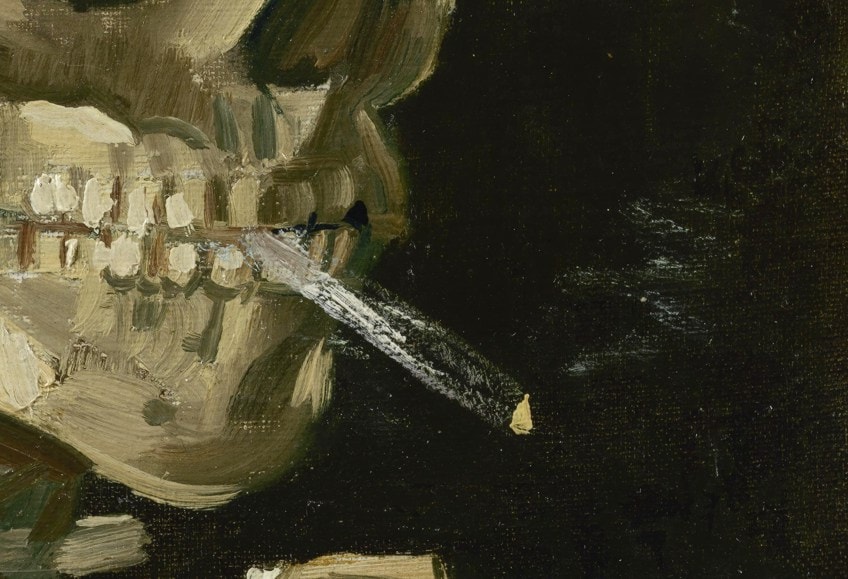
Looking at the top of the smoking skull, van Gogh applied wide-set brushstrokes and there is also a thinner wavy line running through the center of the skull, almost dividing the front and the back of it. The way van Gogh painted, with such loose and expressive brushstrokes, is reminiscent of the Impressionist’s approach to painting, and this could have been an influencing factor for his style of painting.
We find this expressive use of brushwork in van Gogh’s other paintings too.
Perspective and Scale
The painting appears almost like a portrait, the skeleton can be easily assumed to be sitting. It is portrayed from a semi-profile angle. The painting itself measures 32 by 24.5 centimeters (13 by 9.6 inches) and is not a large painting in size.

The Van Gogh Skeleton Smoking in Pop Culture
The van Gogh skull achieved another level of fame when Chip Kidd, a book cover graphic designer, used it as the front cover for the publication When You Are Engulfed in Flames (2008) by the American comedian and author, David Raymond Sedaris.
The author is believed to have seen the image of the painting on a postcard when he traveled to Amsterdam and became engrossed by it, which undoubtedly inspired the front cover of his book’s first edition.
Furthermore, the book, which is composed of several essays, explores the author’s attempts at quitting smoking in the final essay.
Van Gogh Lit Up
Vincent van Gogh aptly illustrated the famous adage, “Smoking will kill you”, bringing to life an image that has been associated with death for centuries, which is the image of a skeleton. Although there have been numerous interpretations of this famous van Gogh skeleton smoking painting, from it being a mere study in anatomy with a twist of van Gogh’s humor and boredom to it being van Gogh’s own interest to represent death as a “Memento Mori” painting.
Whatever the meaning was behind van Gogh’s Skull of a Skeleton with Burning Cigarette, and whatever the artist’s intentions were to paint it the way he did, the one thing that is certain is that Vincent van Gogh had a light side to him. We see a side of the artist that we have not widely known as most of us have associated him with mental illness, the darker aspects of life, and the artist who cut off his own ear.
“Skull of a Skeleton with Burning Cigarette” shows us, the viewers that, yes, Vincent van Gogh was also a human being with an inner jokester – albeit a dark jokester, a jokester, nonetheless. We can even imagine the artist having a slight chuckle to himself while painting this. We might even wonder what it would be like to have the opportunity to sit alongside him, possibly smoking a pipe with him, even having a laugh with him at the absurdity of it all.
Take also a look at our skeleton smoking webstory.
Frequently Asked Questions
Who Painted the Skeleton Smoking?
Vincent van Gogh painted the famous oil on canvas of a skeleton smoking, it is titled Skull of a Skeleton with Burning Cigarette (c. 1886).
What Is the Meaning of the van Gogh Skeleton Painting?
The exact meaning of the Skull of a Skeleton with Burning Cigarette (c. 1886) is not a certainty; there are various interpretations. Some suggest the painting was a study for one of van Gogh’s anatomy classes when he was at the Royal Academy of Fine Arts in Antwerp and painted it to make fun of the academic institution. Others suggest it may have been a “Memento Mori” and could have been because of his father’s death.
Where Is the Painting Skull of a Skeleton with Burning Cigarette (c.1886) Now?
Skull of a Skeleton with Burning Cigarette (c.1886) is now housed in Amsterdam at the Van Gogh Museum.
What Is the Price of Skull of a Skeleton with Burning Cigarette (c.1886) by Vincent van Gogh?
The price of Skull of a Skeleton with Burning Cigarette (c.1886) by Vincent van Gogh is uncertain and possibly priceless as the painting was always within the van Gogh family. When the artist died, his brother Theo van Gogh, acquired the painting. After his death Theo’s wife, Johanna van Gogh-Bonger, inherited it and it was passed on to hers and Theo’s son, also named Vincent Willem van Gogh. The painting became a part of the Van Gogh Foundation and it was loaned to the Stedelijk Museum and then to the Van Gogh Museum, both located in Amsterdam. It is now housed at the Van Gogh Museum.
Isabella studied at the University of Cape Town in South Africa and graduated with a Bachelor of Arts majoring in English Literature & Language and Psychology. Throughout her undergraduate years, she took Art History as an additional subject and absolutely loved it. Building on from her art history knowledge that began in high school, art has always been a particular area of fascination for her. From learning about artworks previously unknown to her, or sharpening her existing understanding of specific works, the ability to continue learning within this interesting sphere excites her greatly.
Her focal points of interest in art history encompass profiling specific artists and art movements, as it is these areas where she is able to really dig deep into the rich narrative of the art world. Additionally, she particularly enjoys exploring the different artistic styles of the 20th century, as well as the important impact that female artists have had on the development of art history.
Learn more about Isabella Meyer and the Art in Context Team.
Cite this Article
Isabella, Meyer, “Van Gogh Skeleton Smoking – An Enlightening Look at the Van Gogh Skull.” Art in Context. January 19, 2022. URL: https://artincontext.org/van-gogh-skeleton-smoking/
Meyer, I. (2022, 19 January). Van Gogh Skeleton Smoking – An Enlightening Look at the Van Gogh Skull. Art in Context. https://artincontext.org/van-gogh-skeleton-smoking/
Meyer, Isabella. “Van Gogh Skeleton Smoking – An Enlightening Look at the Van Gogh Skull.” Art in Context, January 19, 2022. https://artincontext.org/van-gogh-skeleton-smoking/.


